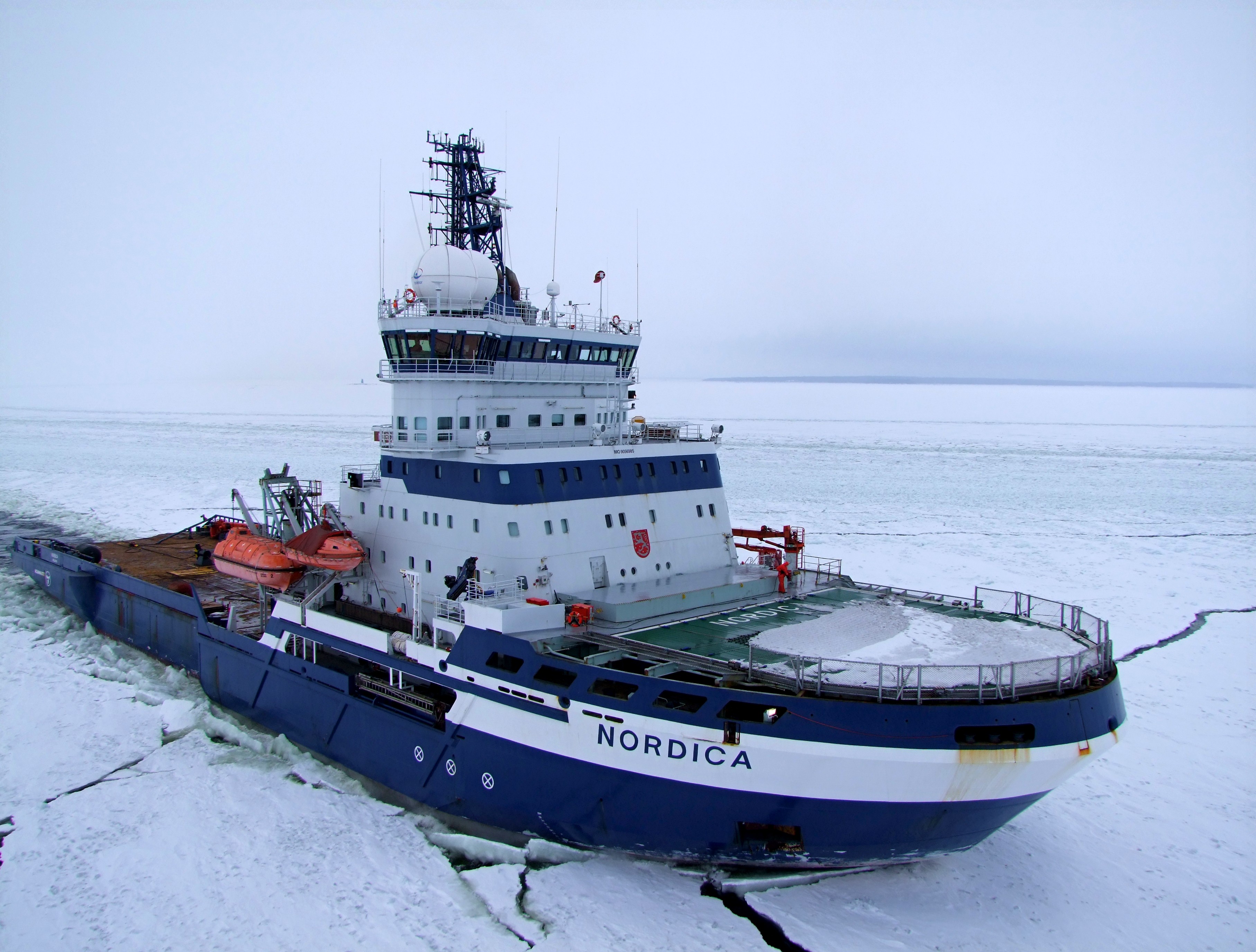Sharing icebreakers between industry and research

The state-owned Finnish shipping company Arctia broke a new record this summer with the earliest crossing of the Northwest Passage by its multipurpose icebreaker MSV Nordica. But the trip was not aimed at a new record transit; the expedition was meant to showcase the opportunity of shared use of icebreakers for polar research.
“Arctia had an innovative idea: their multipurpose icebreaker Nordica participated in a conference in the Republic of Korea and the ship had to be transferred back to the Atlantic,” explains Daria Gritsenko, Postdoctoral Researcher at the University of Helsinki and a member of the Arctic 100 crew. “So they had the idea to get the ship back via the Northwest Passage and to organize an international expedition.”
This became the “Arctic 100 Expedition,” which transited through the Canadian Archipelago from Vancouver to Greenland’s capital Nuuk during July 2017.
A global icebreaker fleet
This expedition was meant to celebrate the centenary of Finland’s independence and Finland’s first year as Chair of the Arctic Council, but more substantially, Arctic Ltd. offers its fleet and expertise for the international research community by using the rare occurrence of commercial icebreaker transit voyages also for other purposes such as polar research. This would facilitate research ambitions of many countries and research institutes worldwide that do not have the logistical means to access remote polar marine areas.
In other words, the Arctic 100 Expedition can be seen as a trial run for the icebreaker-sharing idea that has been floating around for a while and discussed in various fora, the press release notes, and could provide further impetus for the plan of a global icebreaker fleet.
Ideally, one day icebreakers all over the world could be jointly used for research purposes in polar areas. With its trip through the NWP this summer, Arctia aimed to create a precedent for pooling and sharing Arctic assets, the press release reads.
Difficult timing
The idea for the Arctic 100 Expedition is already two years old and back then over 100 universities and research institutes from around the world were invited to co-develop and implement the idea. However, the lack of sufficient funding put the project on hold for a while. The planned transit of Arctia’s icebreaker MSV Nordica through the Northwest Passage in July 2017 then provided the window of opportunity to finally implement the project.
The aim of the trip was that a diverse group of actors would make observations about the Arctic sea ice and strengthen ties between business, academic and media representatives as well as with local representatives from the Arctic.
“The offer to participate in the trip came only in June so rather short term but the deal was attractive: the participants only had to cover their expenses to get to Vancouver and to travel home from Nuuk,” Gritsenko told HNN. The short notice unfortunately also meant that there was not enough time to receive the necessary permits to visit communities on the way or to take any probes, such as from ice and water, Gritsenko said. For this reason, the expedition was mainly attractive for social scientists and media, who got a chance to conduct observations and discuss Arctic affairs.
This also meant that the expedition participants spent 24 days on a non-stop trip through the Arctic, so there was much time to admire the scenery and engage with each other. “Since there was no pre-determined program for the participants while on board, I organized a lecture series with everyone giving a talk about their expertise or work area to initiate a discussion and to learn from each other; an idea everyone very much liked and supported,” Gritsenko reported.
Opportunities and challenges
“The concept of co-chartering icebreakers with research institutions and other interested parties and its details are still to be developed”, says Eero Hokkanen, Communications Manager at Arctia to HNN. For example, the cost structure of such an endeavor will be dependent on how many researchers would be on board and how many institutes there are to share the charter.
In any case, such a business model would also be advantageous for a shipping company like Arctia since their icebreakers are used only at a rate of 30 to 40 percent on their home turf, the Baltic Sea; usually only during the winter months. Chartering the icebreakers globally would thus increase their utilization rate, the press release informs.
One challenge will be to combine lengthy funding and planning processes in academia with often fast decision-making in the shipping industry, the press release cautions.
“The idea of icebreaker asset sharing indeed has quite some potential”, Gritsenko elaborates. “In some countries, icebreakers are part of the armed forces and thus cannot be chartered for private or research voyages. “Opportunity voyages” like this one showcased by Arctia can pool many tasks together, i.e. combine a necessary replacement of the ship with scientists on board or coastal services.”